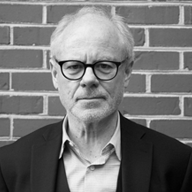Rayford William Law, AIA
Leaders Council Member; Principal, Rayford W Law Architecture and Planning
Bio
Rayford has been a practicing architect for more than 30 years designing a wide variety of building types on Academic, Corporate and Institutional campuses across the country and around the globe. His successful career is driven by a deep passion for understanding his clients’ mission and program needs, a focus which has lead to the design of innovative and award-winning research, learning and work environments.
Of his many accomplishments to date, he notes that two of his former clients, Tom Steitz, the molecular biochemist at Yale University and the Organization for the Prohibition of Chemical Weapons in the Hague, won Nobel prizes performing critical work in facilities which he shaped for them. He is an active member in American Library Association, Society for College & University Planning, Society of Architectural Historians, Project Kaleidoscope as well as serving on the Board of Trustees for the Boston Modern Orchestra Project.
Rayford has also been teaching as Master Thesis Faculty at Boston Architectural College for three decades where he won the AIA/BSA Excellence in Teaching Award in 2011. He received a Bachelor of Environmental Design in Architecture, Summa cum Laude from North Carolina State University College of Design in 1978 and a Master of Architecture with Distinction from Harvard University Graduate School of Design in 1983. He lives in Marblehead, Massachusetts with his sons Wheeler and Peirce.
Motivation to serve on Leaders Council:
Generally, to give back to the College for all that it offered me, but specifically to collaborate with my fellow Alums, see and discuss the new developments in Design Education and at the College in particular, meet the great students, faculty and staff and perhaps most importantly, help set the direction for the College’s future.
Design Philosophy:
Design is both approach and outcome; an engaging activity and a compelling artifact or environment; a way of anticipating and making, but also a way of aligning and understanding. Occasionally elusive, sometimes disruptive and when successful, numbingly soothing if not inspiring, design is never absent.
